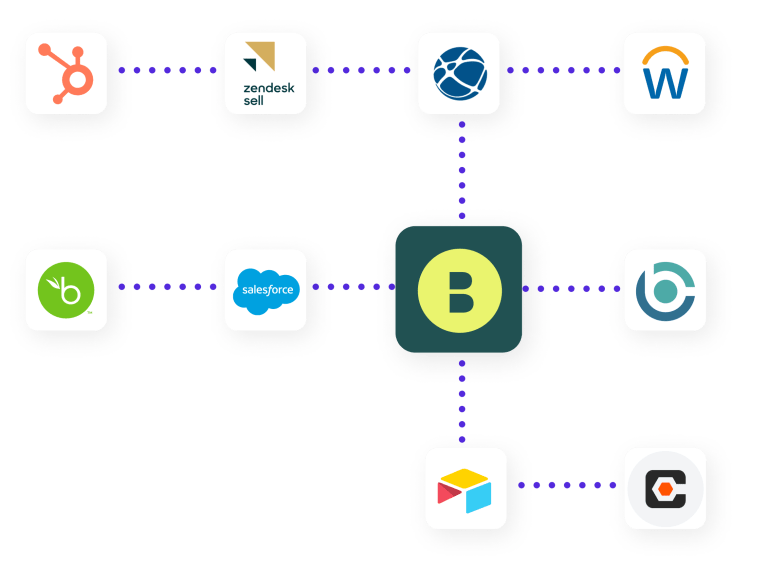Let’s face it: blog posts about spreadsheets are about as engaging to read as spreadsheets are fun to use. However, there’s a movement happening right now with construction technology and software solutions looking to pull the industry out of static spreadsheet systems like Microsoft Excel or Lotus 1 2 3. The reason for that is very simple. Excel is an incredibly powerful tool, and it’s very simple to use at a basic level, just not both simultaneously. It’s like giving an average golfer the best set of clubs and expecting them to hit the ball like a pro when, in reality, they’re just going to be capable of slicing the ball even farther in the wrong direction.
Table of Contents
Now imagine you’re the average golfer in that scenario, but instead of being given the best set of clubs to use, you have to build them first.
There are horror stories. Forbes has written about billions of dollars being lost due to non-integrated, untested spreadsheets that get copied and pasted together. They go so far as to say Excel specifically might be the most dangerous software on the planet. Fortune also writes that Excel is ‘ruining the world,’ but while billions of dollars being lost isn’t a consistent problem for every general contractor using a spreadsheet, significant errors certainly are for almost all of them.
These are the areas where spreadsheet systems fall short and will continue to let down the construction industry.
Human error
This is the big one. Anyone can create a spreadsheet, which means anyone can create a spreadsheet badly. In many cases, new spreadsheet systems are built by one person to replace old spreadsheet systems that became too highly personalized because one person built them, rinse, and repeat. In a survey of MBA spreadsheet users it was discovered that 72% had no company standards or policies for spreadsheet architecture and upkeep. How is Excel responsible for human error? It’s important to remember that spreadsheets offer no way to test and ensure everything has been built correctly. Research from Raymond Panko of the University of Hawaii suggests that 88% of spreadsheets have significant errors and won’t indicate in any way that they’re broken; it will just continue to show the wrong data. Errors as simple as inconsistencies with employee titles (we’ve seen spreadsheets with six different spellings for project managers like Project Managers, PM, P M, etc.) can lead to data falling through the cracks, meaning people falling through the cracks when it comes time to create a manpower plan.
What is the most common method used for testing spreadsheets? Common sense, at 67%.
“In large spreadsheets with thousands of formulas, there will be dozens of undetected errors.”
— Ray Panko, Professor of IT Management at the University of Hawaii
Not built for collaboration
With the widespread growth in the use of networks and cross-functional teams in construction, sharing spreadsheets has become routine practice, and yet controls around sharing have never caught up. Spreadsheets have become the foundation of most construction workforce and project planning processes. 90% of workplace spreadsheets have more than one user – those users will make around 40% of the modifications to those spreadsheets with no audit trail to see who made what changes.
Out of those surveyed, the most common method used to protect their spreadsheet? None, at 73%.
No continuity
Since there’s no way to test spreadsheets, construction companies continue to use error-prone systems that are only legible to the original creator of the spreadsheet. Numerous operations managers joke that they can never retire because “no one else can read their spreadsheets.” On top of that, under 40% of catalog or archive spreadsheets. It’s become a vicious cycle where less than 10% of spreadsheets become a permanent asset. New spreadsheets are created to replace old spreadsheets – but it’s all done with the same tool. Albert Einstein said it best: “The definition of insanity is doing the same thing over and over again but expecting different results.”
“Chainsaws are also a very good tool, but who would use one without a chain guard? People don’t take safeguards to ensure their work is correct.”
— Patrick O’Beirne, European Spreadsheet Risks Interest Group
Your time
With no specific company guidelines for spreadsheet construction, the result is the “designer” tends to ignore the importance of structured and well-designed code, which ultimately catches up to them when the time comes for data collection and consolidation. Making project decisions based on accurate data and analysis becomes impossible, forcing operations teams to make high-level project decisions based on “gut feel” instead of hard data simply because access is too difficult to navigate quickly and accurately. Time is also money. Wasting time navigating between multiple spreadsheets during a manpower meeting is costly to any general contractor. The Harvard Business Review released a study in which they surveyed top executives about strategic meetings and their effectiveness, “their meetings often fail to produce both the quality and quantity of decisions required to drive superior performance.” Communicating necessary information in a way that is easy to engage with leads to more time spent planning and making strategic decisions to move the company forward.
No visibility
90% of spreadsheets are used for data analysis – a major part is picking up on trends to predict better company needs in the future. For construction, that means being able to visualize instantly where a new project can fit in with the company’s timeline and its impact on their workforce needs. It also means seeing the impact of changes made to current projects and how that will affect day-to-day processes and allocations. Spreadsheets offer a place to store data, but unfortunately, seeing the impact of that data clearly and concisely is where those systems continue to fall short.
Summary
The problem facing construction companies when it comes to software solutions is the same reason construction is so adaptive and able to thrive in the first place – every project is different than the last. The customization required for a spreadsheet system to fill the industry’s unique demands is almost impossible, even for a skilled Excel architect. It’s the same reason the software community overlooked construction for so long – it requires dedication to the industry.
Some software solutions have been built to service as many industries as possible – great tools that service many different markets because the level of customization required from industry to industry is minimal. For construction, you’re forced to make it work, ultimately becoming as frustrating to communicate as a spreadsheet.
Bridgit Bench, on the other hand, was built from the ground up for construction workforce planning. Error-free data with permission to make changes or view only. A living, breathing system that updates in real-time to enable collaboration at every stage of the project lifecycle with a dynamic dashboard to help visualize your most valuable workforce data and people and project Gantt views built to be the new foundation for workforce planning meetings.



